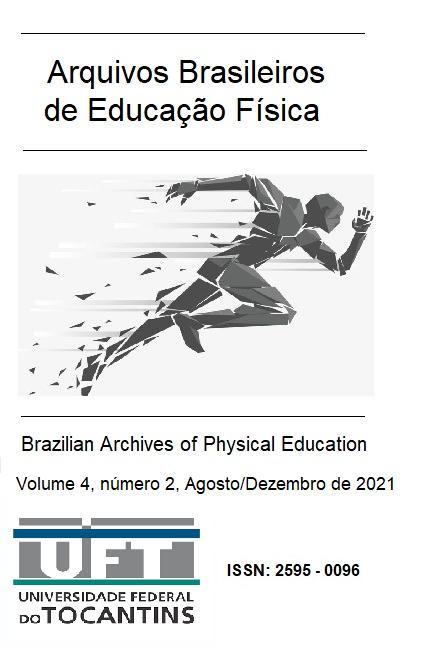The consumption of ultra-processed foods is determinant in the obesity development
DOI:
https://doi.org/10.20873/abef.2595-0096v4n2p142149Keywords:
Nutritional status, Non communicable chronic disease, Risk factor, Public healthAbstract
INTRODUCTION: The consumption of ultra-processed foods (UPF) increases the risk for obesity development; however, the size and impact of this risk has not yet been quantified. OBJECTIVE: To determine the magnitude of UPF consumption in transition of nutritional status of overweight for obesity. METHODS: This observational study was conducted from the data of 15.024 adults of 18 to 59 years (Women: 56%), of the project Vigilância de Fatores de Risco e Proteção para Doenças Crônicas por Inquérito Telefônico (VIGITEL) of 2019. The nutritional status was determined through the body mass index (BMI). Values of BMI between 25 to 29.99 kg/m2 were classified as overweight (n=9618), and when ≥30kg/m2, they are obese (n=5406). The consumption of UPF was considered low (<9 units/day) or high (≥10 units/day). The risk factors: age, sex, scholarity, consumption <9 minimally processed foods (MPF), physical inactivity (≤150min/week of moderate to vigorous intensity), screen time per day, consumption of alcohol (yes/no), weekly consumption of tobacco (n° of cigarettes/week), high blood pressure (systolic >120mm/Hg and/or diastolic >80mm/Hg) and hyperglycemia (≥126mg/dL) were introduced on model of binary logistic regression for the calculus of Odds Ratio (OR) occurrence. RESULTS: The analysis showed that consumption of ≥10 UPF increases in 37% the odd of occurrence of obesity, regardless of other risk factors as: physical inactivity (OR=+26,1%), screen time (OR=+6,5%), consumption of ≥10 MPF (OR=-59%), absence of high-pressure levels (OR=-52,6%), of hyperglycemia (OR=-29,6%) and major scholarity (OR=-2,1%). CONCLUSION: The size of success in the intervention strategies for the prevention of obesity now is known. The effective intervention involves primarily factors like reduction of UPF consumption and increases of MPF consumption, with impact magnitude of 37% and 59% respectively.
References
Fontaine KR, Redden DT, Wang C, Westfall AO, Allison DB. Years of life lost due to obesity. JAMA. 2003; 289(2):187–193.
Blüher M. Obesity: Global epidemiology and pathogenesis. Nature Reviews Endocrinology. 2019;15(5):288–298.
WORLD HEALTH ORGANIZATION. Obesity: Preventing and managing the global epidemic. Report of a WHO consultation. Geneva; 2000.
WORLD HEALTH ORGANIZATION. Global status report on noncommunicable diseases. Geneva; 2014.
Bhupathiraju SN, Hu FB. Epidemiology of Obesity and Diabetes and Their Cardiovascular Complications. Circulation Research. 2016;118(11):1723–1735.
Monteiro CA, Moubarac JC, Cannon G, Ng SW, Popkin B. Ultra-processed products are becoming dominant in the global food system. Obesity Reviews: An Official Journal of the International Association for the Study of Obesity. 2013;14(2):21–28.
MINISTÉRIO DA SAÚDE. Guia Alimentar para a População Brasileira. Brasília; 2014.
Martí A, Calvo C, Martínez, A. Ultra-processed food consumption and obesity-a systematic review. Nutricion Hospitalaria. 2021;38(1):177–185.
Nardocci M, Leclerc BS, Louzada ML, Monteiro CA, Batal M, Moubarac JC. Consumption of ultra-processed foods and obesity in Canada. Canadian Journal of Public Health = Revue Canadienne de Santé Publique. 2018; 110(1):4–14.
Fardet A. Minimally processed foods are more satiating and less hyperglycemic than ultra-processed foods: A preliminary study with 98 ready-to-eat foods. Food & Function. 2016;7(5):2338–2346.
Rauber F, Steele EM, Louzada MLC, Millett C, Monteiro CA, Levy RB. Ultra-processed food consumption and indicators of obesity in the United Kingdom population (2008-2016). PLoS ONE. 2020;15(5):e0232676
Canhada SL, Luft VC, Giatti L, Duncan BB, Chor D, da Fonseca MJM, et al. (2019). Ultra-processed foods, incident overweight and obesity, and longitudinal changes in weight and waist circumference: The Brazilian Longitudinal Study of Adult Health (ELSA-Brasil). Public Health Nutrition. 2019;23(6):1076–1086.
Hall KD, Ayuketah A, Brychta R, Cai H, Cassimatis T, Chen KY, et al. Ultra-Processed Diets Cause Excess Calorie Intake and Weight Gain: An Inpatient Randomized Controlled Trial of Ad Libitum Food Intake. Cell Metabolism. 2019;30(1):67-77.
Ling AMC, Horwath C. Defining and Measuring Stages of Change for Dietary Behaviors: Readiness to Meet Fruit, Vegetable, and Grain Guidelines among Chinese Singaporeans. Journal of the American Dietetic Association. 2000;100(8):898–904.
Downloads
Published
How to Cite
Issue
Section
License
Proposal for Copyright Notice Creative Commons
1. Policy Proposal to Open Access Journals
Authors who publish with this journal agree to the following terms:
A. Authors retain copyright and grant the journal right of first publication with the work simultaneously licensed under the Creative Commons Attribution License that allows sharing the work with recognition of its initial publication in this journal.
B. Authors are able to take on additional contracts separately, non-exclusive distribution of the version of the paper published in this journal (ex .: publish in an institutional repository or as a book), with an acknowledgment of its initial publication in this journal.
C. Authors are permitted and encouraged to post their work online (eg .: in institutional repositories or on their website) at any point before or during the editorial process, as it can lead to productive exchanges, as well as increase the impact and the citation of published work (See the Effect of Open Access).

